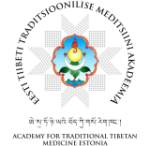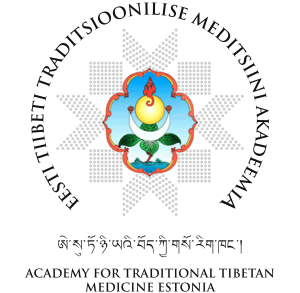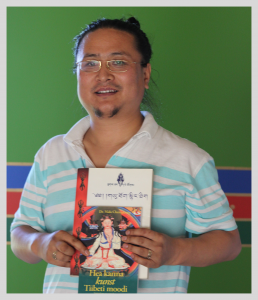KU NYE COURSE IN ENGLISH
KN 1.1 Basic Ku Nye Massage
The Ku Nye massage originated from the ancient kingdoms of Tibet over 3900 years ago and is a practice indigenous to the Tibetan medical tradition. Earliest Tibetans practiced Ku Nye through the diagnosis and application of specific infused oil or substances extracted from butter to treat the person’s imbalance or constitution.
The course block consists of two modules with the following content:
KN 1.1.1 Basic Traditional Tibetan Medicine (1 day)*
• Introduction to Sowa Rigpa
• Overview of five elements, three nyes pas, tendrel
• Tantric system
• Overview of the Three Roots
KN 1.1.2 Basic Ku Nye Massage (4 days)
• Introduction to Ku Nye Massage
• Preparation, uses and applications of specialized oils
• Facilitated joint movements
• Massage techniques
• Treatment of muscles of trunk, arms and legs
• Methods of oil removal
• Resting positions
*The module KN 1.1 Basic TTM is equivalent to the workshop Traditional Tibetan Medicine
KN 1.2 Advanced Ku Nye Massage
Tree branches, sticks and stones were widely used as part of therapy to exert pressure on different parts of the body and specialized points of a complex system in order to restore the individual to a state of health and wellbeing.
The course block consists of three modules with the following content:
KN 1.2.1 Channels & Points (2 days)
• Overview of the point and channel system in TTM
• Treatment of the six external channels
• Ku Nye massage techniques applied on basic moxa points
• Ku Nye massage techniques applied on basic blood letting points
• Ku Nye massage techniques applied on basic acupuncture points
KN 1.2.2 Advanced Ku Nye Massage (2 days)
• Massage techniques with shells
• Massage techniques with natural tools
KN 1.2.3 External Therapies: Lum Soaking Therapy 1 (1 day)
• Introduction to soaking therapy
• Hot and cold compresses
• Compresses with agate
• Salt compresses
KN 2.1 External Therapies 1
Traditional Tibetan Medicine offers the probably greatest wealth of external therapies currently available in a holistic medical science used to maintain or restore balance to the organism. Based on a comprehensive energy system the external therapies include various types of external and invasive applications of elemental energies such as heat, coldness and vibration.
The course block consists of three modules with the following content:
KN 2.1.1 External Therapies: Astrology & Invasive Treatment(1 day)
• Overview of invasive external therapies
• Astrological indications
• Cleansing procedures
• Smoke therapy
KN 2.1.2 External Therapies: Metsa Moxibustion 1 (2 days)
• Introduction to moxibustion and its point system
• Moxa cigars
• Moxa of back, arms and legs
KN 2.1.3 External Therapies: Mebum Cupping (2 days)
• Introduction to cupping
• Cup types and horns
• Dry and wet cupping
• Treatment according to specific indications
KN 2.2 External Therapies 2
As the course progresses, more invasive treatment methods are introduced.
The course block consists of three modules with the following content:
KN 2.2.1 External Therapies: Metsa Moxibustion 2 (2 days)
• Horme (Mongolian moxa)
• Moxa cones
• Moxa of frontal trunk and face
KN 2.2.2 External Therapies: Yukcho Stick Therapy (2 days)
• Introduction to stick therapy
• Stick types
• Treatment of trunk, arms and legs
KN 2.2.3 External Therapies: Lum Soaking Therapy 2 (1 day)
• Herbal compresses
• Compresses with gemstones
• Water therapies
• Bath therapy with different types of water
• Herbal bath
• Treatment with steaming and sweating
KN 3.1 Diagnosis*
This course block introduces diagnostic aspects of TTM knowledge into the training. It is primarily based on material from the third and fourth of the Medical Tantras. All of this will be integrated with further refinements of previous techniques to treat specific conditions.
The course block consists of three modules with the following content:
KN 3.1.1 Basic Diagnostics (1.5 days)
• Principles of diagnosis
• Triage
• Inspection of the body and related aspects
• Inspection of sense organs
KN 3.1.2 Base of Urine Analysis (1.5 days)
• Preliminaries
• Urine characteristics
• Urine analysis
• Types of urin
KN 3.1.3 Base of Pulse Reading (2 days)
• Preliminaries
• Pulse characteristics
• Pulse reading
• Types of pulse
*The course block KN 3.1 Diagnosis is equivalent to the course block TTM 2.1 Diagnosis
KN 3.2 Clinical Integration
Optional Module KN 4.1 Blood Letting*
Blood Letting has been used in different cultures around the world for thousands of years. TTM indications include the most common hot natured disorders with deep imbalances. Through its invasive nature it is considered highly effective.
The optional module KN 4.1 Blood Letting (2 days)* deals with:
• Introduction to blood letting and its point system
• Blood letting techniques
• Blood letting of arms and legs
*The optional module KN 4.1 Blood Letting requires basic medical knowledge, especially in anatomy and physiology. Admission to this course is individually examined.
Optional Module KN 4.2 Basic Acupuncture*
Traditional Tibetan Medicine has its own system of acupuncture based on anatomical structures as well as energy connections to specific points. As part of the division of surgical external therapies, acupuncture is considered one of the final methods applied in a disorder.
The optional module KN 4.2 Basic Acupuncture (2 days)* deals with:
• Introduction to acupuncture and its point system
• Acupuncture techniques
• Acupuncture of arms and legs
*The optional module KN 4.2 Basic Acupuncture requires basic medical knowledge, especially in anatomy and physiology. Admission to this course is individually examined.
Optional Module KN 4.3 Advanced Acupuncture*
This modules goes deeper into the acupuncture system of Traditional Tibetan Medicine, introducing combination techniques with heat application, acupuncture of more sensitive regions of the body as well as different energetic properties in material and locations.
The optional module KN 4.3 Advanced Acupuncture (2 days)* deals with:
• Hot and cold needle
• Acupuncture of the trunk
• Golden needle
*The optional module KN 4.3 Advanced Acupuncture requires the completion of the module KN 4.2 Basic Acupuncture.
Optional Module KN 4.4 Purgative Therapies*
Although purgative therapies are part of medication treatment, the application of some evacuative methods requires manual skill similar to that used in external therapies.
The optional module KN 4.4 Purgative Therapies (2 days)* deals with:
• Overview of purgative gastrointestinal therapies
• Enemas
• Colon cleansing
*The optional module KN 4.4 Purgative Therapies requires medical knowledge in anatomy, physiology, pathology and pharmacology. Admission to this course is individually examined.
Optional Module KN 4.5 Energy Treatment
Next to the rich variety of physical treatment the External Therapies of TTM also include a range of energetic treatment. They deal with the deeper underlying imbalances affecting subtle energy structures of the human body.
The optional module KN 4.5 Energy Treatment (2 days) deals with:
• Astrological path of la
• La massage
• Introduction to the Vajrayana chakra system
• Chakra massage
Ku Nye kursuse programm eesti keeles
Ku Nye курс на русском языке



